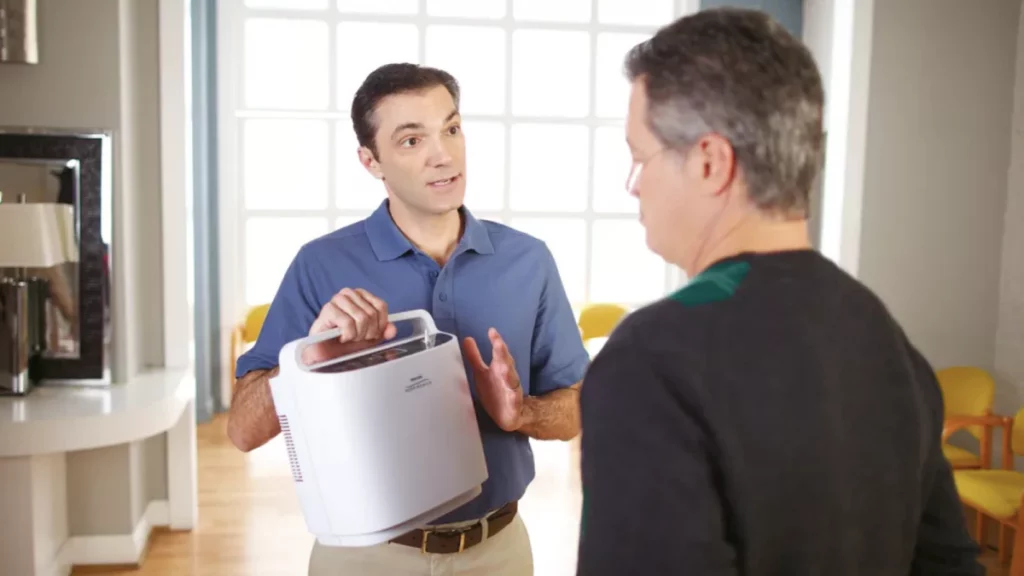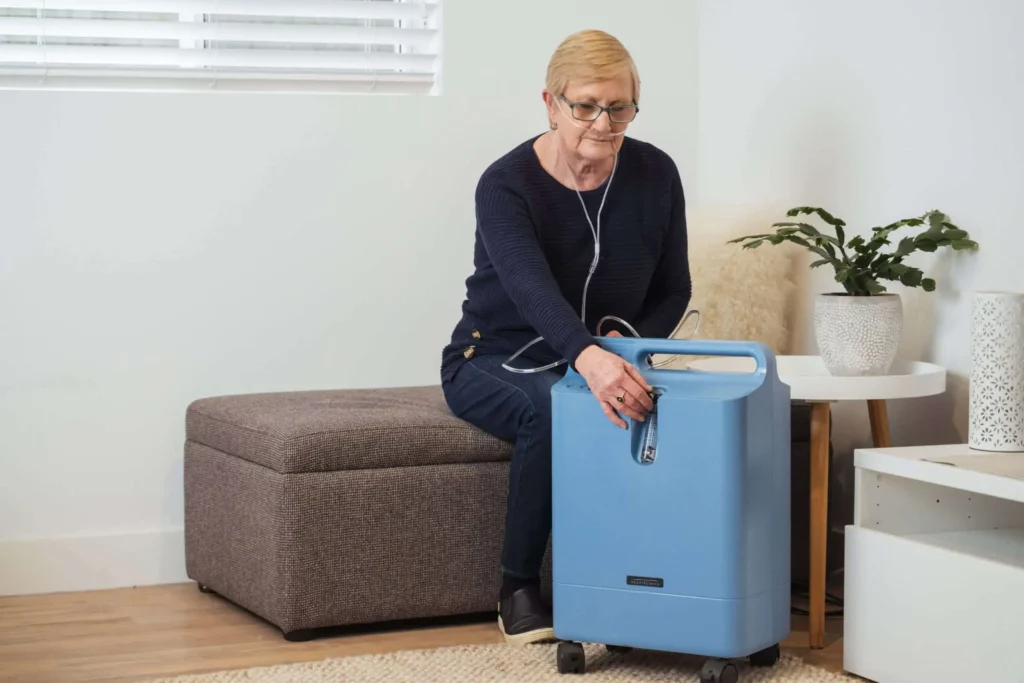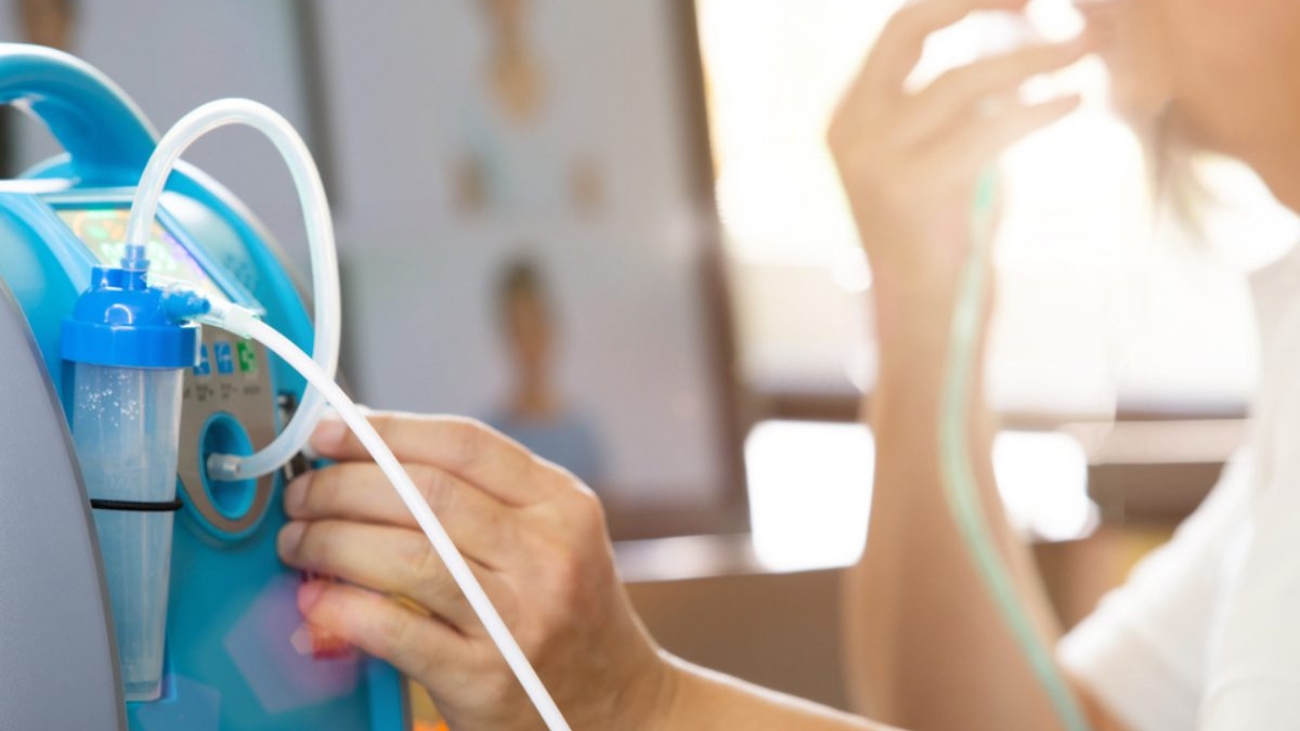Oxygen concentrators are essential medical devices for individuals who need supplemental oxygen therapy. These machines extract oxygen from the surrounding air and deliver it directly to patients, ensuring they receive the concentrated oxygen necessary for optimal breathing and an improved quality of life.
The medical equipment market offers a variety of oxygen concentrator options to suit specific patient needs:
- Portable units – lightweight, battery-powered devices ideal for active lifestyles
- Stationary systems – robust home units providing higher oxygen output
- Continuous flow delivery – steady oxygen stream for consistent therapy
- Pulse dose systems – oxygen delivery synchronized with breathing patterns
When selecting an oxygen concentrator, it’s important to consider several factors such as oxygen flow rates, delivery methods, portability requirements, and power options. This comprehensive guide will explore the key features that buyers should assess when purchasing an oxygen concentrator. By understanding these aspects, individuals can make informed decisions that align with their therapeutic needs and lifestyle preferences.
Understanding Different Types of Oxygen Concentrators
An oxygen concentrator is a medical device that takes in air from the surroundings, removes nitrogen, and provides concentrated oxygen to patients through a nasal cannula or mask. These devices use special filters and sieve beds to separate oxygen from other gases in the atmosphere, ensuring a steady supply of high-quality oxygen for medical purposes.

1. Stationary Oxygen Concentrators
These are heavy-duty units designed for home use. Here are some key features:
- Weight ranges from 15-25 kg
- Higher oxygen output capacity (5-10 litres per minute)
- Requires constant power connection
- Ideal for bedbound patients or night-time use
A popular option in this category is the Philips Everflo, which is known for being quiet and energy efficient.
2. Portable Oxygen Concentrators
These are lightweight devices designed for mobility. Here are some important characteristics:
- Weight ranges from 2-9 kg
- Battery-powered operation
- Lower oxygen output (1-5 litres per minute)
- Perfect for active lifestyles and travel
- Compact size fits in cars or aircraft
For those looking for portable oxygen solutions, there are several options available from top brands including Zen-O, Inogen, Philips, and more.
Medical-grade oxygen concentrators usually provide oxygen purity levels between 87% and 95%. Stationary units maintain consistent purity levels because of their sturdy systems, while portable units might have slight variations depending on how intensely they are used and the surrounding conditions.
The choice between portable and stationary units depends on specific medical needs, lifestyle requirements, and prescribed oxygen flow rates. Some patients decide to have both types – a stationary unit like the Philips Everflo for home use and a portable device for outdoor activities.
Oxygen Delivery Modes: Continuous Flow vs Pulse Dose
Oxygen concentrators utilise two primary delivery methods: continuous flow and pulse dose systems. Each method serves specific patient needs and offers distinct advantages.
Continuous Flow Delivery
- Delivers a steady, uninterrupted stream of oxygen
- Ideal for patients requiring oxygen during sleep, often facilitated by CPAP masks which are designed to maintain a continuous flow of oxygen
- Suitable for individuals with specific respiratory conditions requiring constant oxygen supply
- Often found in stationary units due to higher power requirements
Pulse Dose Delivery
- Delivers oxygen only when the patient inhales
- Triggers oxygen release through breath detection
- Conserves oxygen by eliminating waste during exhalation
- Extends battery life in portable units
- Particularly effective during physical activity
The selection between these delivery modes depends on several factors:
- Medical Requirements: Some conditions necessitate continuous flow, while others respond well to pulse dose delivery
- Activity Level: Pulse dose systems adapt to varying breathing rates during exercise
- Sleep Patterns: Continuous flow might be preferred during sleep when breathing patterns change, especially with the use of CPAP masks
- Device Portability: Pulse dose technology enables smaller, lighter units ideal for travel
Pulse dose systems incorporate advanced sensors to detect inhalation patterns, adjusting oxygen delivery to match breathing rhythms. This technology maximises efficiency while maintaining therapeutic effectiveness. The choice between delivery modes should align with medical prescriptions and lifestyle requirements.
Read more at: Why the EverFlo Concentrator Is a Top Choice for Home Oxygen Users

Assessing Your Oxygen Output Requirements
The prescribed oxygen flow rate from a healthcare provider serves as the foundation for selecting an appropriate oxygen concentrator. This medical prescription specifies the exact amount of supplemental oxygen needed, measured in litres per minute (LPM).
Stationary Oxygen Concentrators
Stationary oxygen concentrators typically deliver higher output capacities, ranging from 5 to 10 LPM. These units suit patients requiring substantial oxygen supplementation or those needing oxygen therapy during sleep.
Portable Oxygen Concentrators
Portable oxygen concentrators offer lower output capacities:
- Low-flow units: 1-3 LPM
- Medium-flow units: 3-5 LPM
- High-flow portable units: 5-6 LPM
Factors Affecting Oxygen Delivery
The actual oxygen delivery can vary based on:
- Altitude changes
- Temperature fluctuations
- Device maintenance status
- Battery power levels (for portable units)
Matching Output Capacity with Prescribed Needs
A crucial consideration lies in matching the device’s maximum output capacity with prescribed needs, allowing room for potential adjustments. Patients with varying oxygen requirements throughout the day might benefit from devices offering adjustable flow settings.
Purity Levels of Medical-Grade Oxygen Concentrators
Medical-grade oxygen concentrators maintain specific purity levels:
Standard oxygen concentrators deliver 87-95% pure oxygen at prescribed flow rates, meeting medical-grade requirements for safe and effective therapy.
Understanding these output specifications helps ensure the selected device meets individual therapeutic needs while maintaining compliance with medical prescriptions.
Portability Considerations: Weight, Battery Life & Power Options
Weight and Mobility
Portable oxygen concentrators range from 2.2 kg to 8.6 kg, with lighter models offering enhanced mobility for active users. The weight difference impacts daily activities, travel convenience, and user independence. Lighter units under 3 kg prove ideal for regular outings, while heavier models might suit users who prioritise higher oxygen output over portability.
Understanding Battery Life
Battery life spans between 2.5 to 8 hours, depending on:
- Flow rate settings
- Battery capacity
- Environmental temperature
- Usage patterns
- Device age and condition
Most portable concentrators operate with rechargeable lithium-ion batteries. Users requiring extended mobility benefit from carrying spare batteries, which add minimal weight while doubling available usage time.
Power Management Options
Power management options enhance device reliability:
- AC Power Supply: Standard wall outlet charging
- DC Power Adapters: Vehicle charging capability
- External Battery Chargers: Simultaneous charging of multiple batteries
- Solar Charging Options: Available for specific models
Temperature Effects on Batteries
Temperature affects battery performance significantly. Extreme heat or cold can reduce battery life by up to 40%. Storing batteries at room temperature and avoiding full discharge helps maintain optimal performance.
Smart Battery Indicators
Modern portable concentrators feature smart battery indicators displaying:
- Remaining battery percentage
- Estimated runtime
- Charging status
- Battery health metrics
These features enable users to plan activities and manage power consumption effectively. Selecting a device with multiple power options ensures uninterrupted oxygen therapy across various settings and activities.
Noise Level Impact on Comfort & Cost Factors to Keep in Mind
The operational noise of oxygen concentrators plays a significant role in patient comfort and daily living quality. Different models generate varying sound levels, typically ranging from 40 to 60 decibels during operation. For perspective, 40 decibels equates to a quiet library environment, while 60 decibels matches normal conversation volume.
Noise Considerations:
- Bedroom Use: Models under 45 decibels prove ideal for nighttime use
- Living Areas: Units up to 50 decibels remain suitable for daytime spaces
- Travel Settings: Noise tolerance might differ in various environments
The initial investment for portable oxygen concentrators ranges from £2,000 to £4,500, depending on specifications and features. This price variation reflects differences in:
- Build quality
- Oxygen output capacity
- Noise reduction technology
- Brand reputation
Hidden Costs to Consider:
- Replacement filters: £50-100 annually
- Battery replacements: £200-400 every 1-2 years
- Service checks: £150-300 per visit
- Power consumption: Additional £10-30 monthly on electricity bills
Premium models often incorporate advanced noise reduction features through improved compressor design and sound-dampening materials. These units typically command higher prices but deliver enhanced comfort through quieter operation. The correlation between noise levels and cost often reflects manufacturing quality and technological sophistication.
Regular maintenance helps maintain optimal noise levels and prevents deterioration of sound-dampening components. Professional servicing every 12-18 months ensures consistent performance and helps avoid unexpected repair costs.
Warranty Coverage, Servicing Needs & Regulatory Compliance Requirements
Manufacturer warranties for oxygen concentrators typically range from 3 to 5 years, with variations depending on specific brands and models. Premium manufacturers like Inogen and Philips Respironics often provide comprehensive coverage that includes:
- Parts replacement
- Labour costs
- Technical support
- Shipping for repairs
Regular maintenance schedules play a critical role in device longevity and performance. Essential service requirements include:
Daily Maintenance:
- Cleaning external filters
- Wiping down surfaces
- Checking power connections
Monthly Tasks:
- Deep cleaning of intake filters
- Inspecting tubing for wear
- Battery performance checks
Annual Professional Service:
- Internal filter replacement
- Oxygen purity testing
- Pressure system evaluation
- Electrical safety checks
The cost implications of servicing extend beyond the initial purchase price. Users should budget for:
- Replacement filters: £50-100 annually
- Battery replacements: £200-400 every 2-3 years
- Professional servicing: £150-300 per visit
Medical device regulations require oxygen concentrators to meet specific safety and performance standards. Devices must comply with:
- TGA approval for Australian use
- ISO 13485 certification
- Regular calibration requirements
- Documentation of service history
Reputable suppliers maintain detailed service records and provide certification of compliance with these standards. Users should retain all maintenance documentation to ensure warranty validity and compliance with medical device regulations.
Prescription Requirements & Additional Factors to Consider Before Purchase
Medical-grade oxygen concentrators require a valid prescription from a qualified healthcare provider. This legal requirement ensures patients receive the appropriate oxygen flow rate and delivery method for their specific medical condition. The prescription specifies essential parameters:
- Required oxygen flow rate
- Duration of oxygen therapy
- Delivery method (continuous flow or pulse dose)
- Any specific device requirements
Impact of Altitude on Device Performance
Device performance varies significantly with altitude changes. At higher elevations, oxygen concentrators work harder to deliver the prescribed oxygen levels, potentially affecting:
- Maximum oxygen output
- Battery life
- Device efficiency
Lifestyle Considerations in Selecting an Oxygen Concentrator
Lifestyle considerations play a crucial role in selecting an appropriate oxygen concentrator:
Active Users
- Compact, lightweight designs
- Extended battery life
- Durability for frequent movement
- Multiple charging options
Frequent Travellers
- FAA-approved models
- Universal power adapters
- Carrying cases
- Backup power solutions
Home-based Users
- Higher oxygen output capacity
- Quieter operation
- Stationary unit compatibility
- Simplified controls
The selected device should align with daily routines, travel patterns, and physical capabilities while meeting prescribed oxygen requirements. Healthcare providers can offer guidance on specific features that match individual needs and lifestyle demands.
Additional Devices for Respiratory Conditions
In some cases, additional devices like the Aerobika with Manometer may be recommended to assist with respiratory conditions. The Aerobika device, designed for optimal airway clearance, provides real-time pressure tracking thanks to its integrated manometer, making it a valuable addition to your healthcare toolkit.
Top Brands in the Market Worth Considering
Several established manufacturers have earned reputations for producing reliable oxygen concentrators and related respiratory care products:
1. Inogen
- Pioneer in portable oxygen technology
- Known for lightweight, compact designs
- Popular models include Inogen One G5 and G4
- Strong battery life and quiet operation
2. Philips Respironics
- Extensive range of both portable and stationary units
- SimplyGo and EverFlo series receive high user ratings
- Advanced monitoring systems and alarms
- Robust warranty coverage
3. ResMed
- Specialises in sleep and respiratory care
- Mobi portable concentrator offers innovative features
- Smart technology integration
- Excellent customer support network, also known for their CPAP machines
4. Caire Medical
- Comprehensive product range for varying needs
- FreeStyle series popular among active users
- Focus on durability and performance
- Advanced oxygen sensing capabilities
These manufacturers maintain strict quality standards and offer dedicated customer support. Each brand presents unique features that cater to specific user requirements, from enhanced portability to advanced monitoring capabilities. For those seeking to buy a home oxygen machine, options from top brands including Inogen and Philips can be found here.

